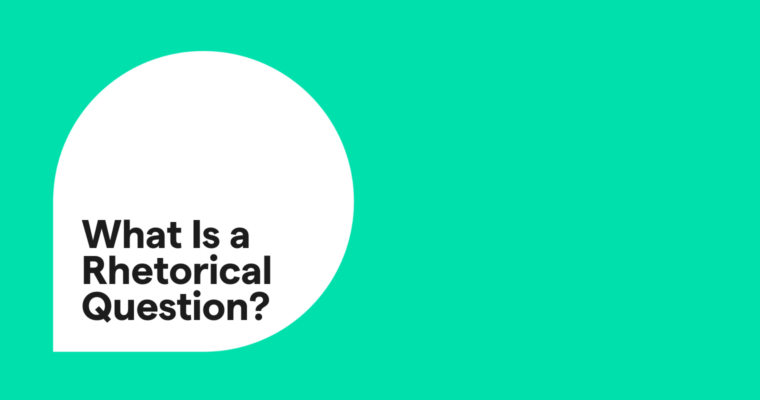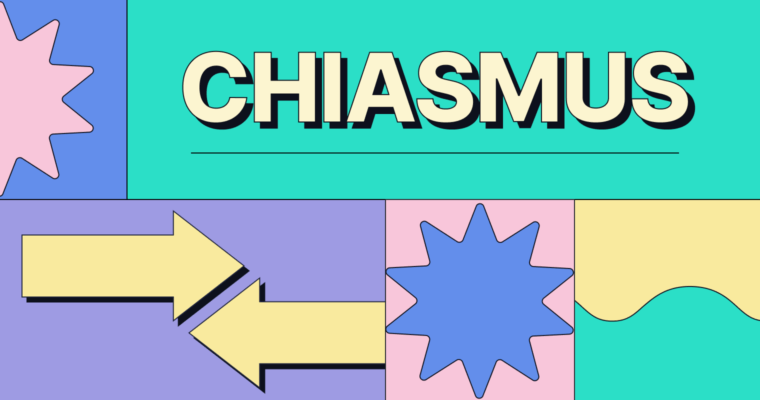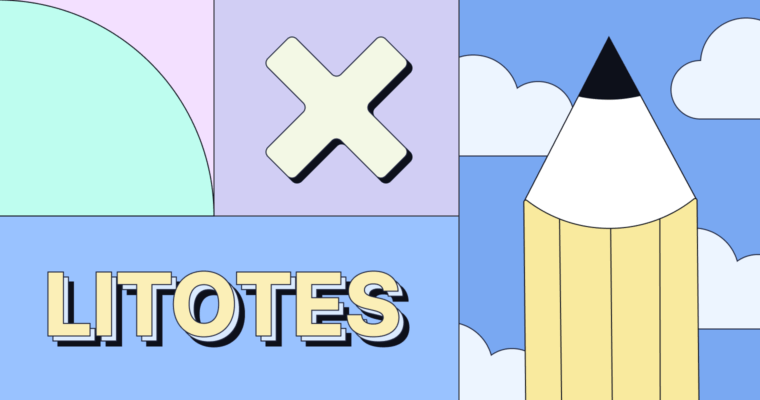
Key takeaways:
- A rhetorical question is a question used to make a point, not to get an answer.
- Writers and speakers use rhetorical questions to grab attention, emphasize ideas, and spark thinking, without expecting a reply.
- You’ll see them everywhere, from casual conversation and ads to books and speeches, prompting you to think or feel a certain way.
A rhetorical question is a question that doesn’t need an answer. From casual chats to powerful speeches, these questions prompt thought and engage us on a deeper level. When someone muses, “Isn’t this weather beautiful?” they’re sharing an appreciation, not awaiting your agreement.
You’ll encounter these thought-provoking questions everywhere, in conversations, advertisements, speeches, literature, and beyond. This literary device draws the audience in, inviting them to ponder the implied answer.
In this guide, we’ll explore the different types of rhetorical questions and how you can use them effectively in your writing and speaking to create impact.
Table of contents
What is a rhetorical question?
How to write a rhetorical question
Purpose of using rhetorical questions
What is a rhetorical question?
A rhetorical question is a question asked to make a point rather than get an answer. As a key tool in rhetoric, also known as the art of persuasion, speakers and writers use them to:
- Emphasize ideas
- Provoke thought
- Express emotions
Because rhetorical questions often contain implied answers, they can be a great way to guide an audience’s thinking without explicitly stating a conclusion.
Types of rhetorical questions
Rhetorical questions come in different forms, each designed to create a specific effect. Some guide the audience’s thinking, some challenge them, and others spark strong emotions. Here are some common types and how they function:
| Type of rhetorical question | Definition | Example | How to use it effectively |
| Anthypophora (a.k.a., hypophora) | A question that is immediately answered by the speaker or writer, guiding the audience to a conclusion. | Who is impacted by pollution? Everyone. | Use this to introduce an idea and control the direction of your message. It works well in speeches, essays, and presentations. |
| Epiplexis | A question meant to challenge, scold, or persuade, not to get an answer. It makes people think or feel a sense of responsibility. | Who wouldn’t want to save the whales? | Use this to stir emotion or urgency, especially in advocacy, opinion pieces, and motivational talks. |
| Erotesis | A question that expects an obvious answer, used to make a strong statement or create impact. | Are you against freedom? | Use this to emphasize a point and rally support. It’s effective in arguments, debates, and persuasive writing. |
How to write a rhetorical question
Writing a rhetorical question is about making a point, not seeking an answer. Follow these simple steps to craft one effectively:
- Identify the purpose: Focus on the point you want to emphasize or the reaction you want to elicit. For example, to highlight the importance of a decision, you might ask, “Do we really want to ignore this opportunity?”
- Start with a statement and turn it into a question: Start with your key idea, then flip it into a question that nudges the reader to agree or reflect. You might start with “Customer feedback should shape our strategy” and turn that into “Who knows our customers better than they do?”
- Consider your audience: Tailor your question to your readers. Will they understand the tone or nuance? A sarcastic question like “Who wouldn’t want to spend their weekend at a car dealership?” might resonate with one audience but confuse or offend another (for instance, an audience of car salespeople)..
- Use the right end-of-sentence punctuation: Rhetorical questions typically end with a question mark, but an exclamation adds emphasis and emotional impact: “How could this happen!”
Purpose of rhetorical questions
Consider using rhetorical questions when you want to persuade, emphasize key ideas, and connect with your audience on a deeper level. Throughout history, influential speakers and writers have employed this device to inspire change and rally support.
You’ll see them at work in other settings too, helping shape tone and guide how your message lands:
- Academic writing: To lead readers toward an idea before backing it up with facts
- Presentations and speeches: To grab attention and make key points stick
- Business communication: To spark discussion, encourage input, or spotlight challenges
- Everyday conversation: To add emphasis, show emotion, or prompt reflection
Pairing rhetorical questions with the right tone indicators can make your message even clearer and more engaging. Here’s a look at effective ways to use rhetoric through rhetorical questions:
| Purpose | How to use it | Example |
| Persuade | Guide your audience toward your viewpoint by using questions that imply the desired answer. | “Isn’t it time we took action?” |
| Emphasize key ideas | Draw attention to crucial points by framing them as questions that highlight their importance. | “What is the single most important factor in our success?” |
| Engage emotions | Stir feelings and create a stronger connection with your audience through questions that tap into their emotions. | “How much longer can we stand by and watch this happen?” |
| Prompt reflection | Encourage your audience to think carefully about a topic by posing questions that spark new trains of thought. | “Isn’t it time we looked at this problem from a different angle?” |
Rhetorical question examples
Below are some examples of rhetorical questions in various types of work, with explanations of their effects.
Literature
In Romeo and Juliet, Shakespeare writes, “What’s Montague? … What’s in a name?” to highlight the emotional divide between identity and labels. Juliet’s rhetorical questions suggest that a name holds no real value compared to the person behind it. This deepens the theme of love rising above social boundaries.
In Alice’s Adventures in Wonderland, Lewis Carroll uses a rhetorical question when the Hatter says, “Who’s making personal remarks now?” The question emphasizes the Hatter’s sarcastic and playful tone, pointing out the absurdity of the conversation.
Speeches
In her famous speech, Sojourner Truth asks, “And ain’t I a woman?” This question directly challenges the racist and sexist ideas of her time. It redefines womanhood by asserting her strength, labor, and humanity, and it confronts narrow societal norms.
Emma Watson, in her UN speech, asks, “Why has the word [feminist] become such an uncomfortable one?” The rhetorical question encourages the audience to reflect on gender equality and consider why the term carries unnecessary stigma.
Everyday language
In everyday conversation, rhetorical questions like “Is the sky blue?” are used to state the obvious and add emphasis. Similarly, “Why not?” encourages action by suggesting there is no reason to hold back.
Professional usage
In professional settings, questions like “What’s the real cost of not taking action?” prompt reflection and highlight potential negative consequences. Another example, “Isn’t it time we looked at this problem from a different angle?” encourages the audience to consider new ideas and fresh perspectives.
Add weight to your writing with rhetorical questions
Want to make your writing more engaging? Try using rhetorical questions. They draw readers in, create memorable moments, and emphasize your key points. A well-placed rhetorical question makes your audience feel part of the conversation and helps your message stick with them long after they’ve finished reading.
Keep your writing clear with Grammarly
Rhetorical questions add impact and engage readers. Grammarly helps you use them effectively. Its tone detector ensures your questions sound intentional, while grammar and style suggestions keep them clear and concise. Try Grammarly for free today and make every word count.
Rhetorical question FAQs
Below are frequently asked questions about rhetorical questions—how they work, how to recognize them, and what terms you can use in their place.
Should a rhetorical question require a response?
No, rhetorical questions don’t need a response. They’re used to make a point, not get information. For example, “Who doesn’t love a good story?” suggests that everyone does—it’s not meant to be answered.
These questions often encourage the reader or listener to think, helping to strengthen the message without needing a reply.
How can I identify a rhetorical question?
Rhetorical questions usually make a point instead of asking for information. A good clue is when the answer is obvious or the question is used to persuade or emphasize something.
For example, “Isn’t it time we did something about this?” pushes for action rather than a response. You’ll often see rhetorical questions in essays, speeches, or persuasive writing.
What are some rhetorical question synonyms?
There’s no exact synonym for the term “rhetorical question,” but similar terms include:
- Leading question
- Suggestive question
- Persuasive question
These describe questions used to guide thinking, not to get an answer. You might also hear phrases like “implied question” or “figurative question,” especially in writing or public speaking.






